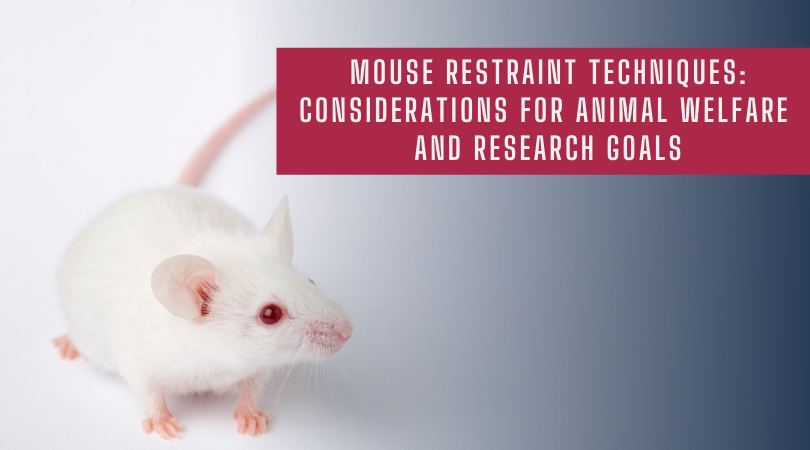Mouse Restraint Techniques: Considerations for Animal Welfare and Research Goals
Posted on
Routine handling of laboratory mice can improve animal welfare and make them easier to restrain for research procedures. Yet there is conflicting information about the best method of handling and restraint. The conventional technique for handling mice was to grasp them firmly by the base of the tail, but this tail handling method has proven to be aversive. Many studies have shown that capturing and restraining mice by the tail induces anxiety and anhedonia. This not only has a profound impact on the welfare of laboratory animals, but by inhibiting the value of reward, it may also impact the efficacy of scientific studies(1,2).
 These same studies have extolled the benefits of using a tunnel or cupped (open) hand for mouse restraint and handling. This not only eliminates a pervasive source of anxiety but tends to increase the willingness of the mouse to interact with its handler, and to accept physical restraint devices more willingly. Additionally, Henderson et al. (2020) found the benefits of mouse tunnel handling were not diminished by other more invasive procedures; specifically intraperitoneal (IP) injections and anesthesia.
These same studies have extolled the benefits of using a tunnel or cupped (open) hand for mouse restraint and handling. This not only eliminates a pervasive source of anxiety but tends to increase the willingness of the mouse to interact with its handler, and to accept physical restraint devices more willingly. Additionally, Henderson et al. (2020) found the benefits of mouse tunnel handling were not diminished by other more invasive procedures; specifically intraperitoneal (IP) injections and anesthesia.
Ergo, replacing tail handling with tunnel handling is a relatively simple change that can dramatically improve scientific outcomes and mouse welfare. They are more likely to habituate to being physically restrained by the scruff of the neck without losing tameness. Naturally, the mice must become fully accustomed to being restrained in this manner to reap the full benefits of this procedural tweak.
What are the Different Types of Physical Restraint for Laboratory Mice?
Physical restraints may be manual or mechanical methods of restricting an animal’s movement during a procedure. They are not usually intended for prolonged use and should align closely with both animal welfare requirements and critical research goals. Where lab animals are restrained for longer periods, that aforementioned period of habitation should be extended to ensure the animal is fully conditioned to the restraint.
Here we will illustrate the diversity of different mouse restraints, by highlighting two different types of physical restraint:
- Flat Bottom Rodent Holders resemble tunnels in that they are semi-cylindrical mouse restraints. At Kent Scientific, we supply mouse holders with a tailgate which provides access to the tail for simple procedures like blood sampling and injections.
- Nose Cone Animal Holders are similar to tunnel restraints albeit with a dark nose cone holder inside the transparent tunnel. The mouse’s nose protrudes through the front of the cone while the tail exits through the rear hatch opening. This allows the researcher to observe the animal throughout the procedure, while blocking the animal’s field of view to increase its sense of security.
If you are looking for mouse restraints for research applications, the Kent Scientific team is happy to help. We offer a range of animal handling equipment for preclinical research and drug discovery applications, helping researchers to make the most of their lab animal companions.
Sources:
- Hurst, J., West, R. Taming anxiety in laboratory mice. Nat Methods 7, 825–826 (2010). https://www.nature.com/articles/nmeth.1500
- Henderson, L.J., Dani, B., Serrano, E.M.N. et al. Benefits of tunnel handling persist after repeated restraint, injection and anaesthesia. Sci Rep 10, 14562 (2020). https://www.nature.com/articles/s41598-020-71476-y
- Kelly Gouveia, John Waters and Jane L Hurst, University of Liverpool, Handling and restraint: General principles (2022) https://nc3rs.org.uk/3rs-resources/handling-and-restraint